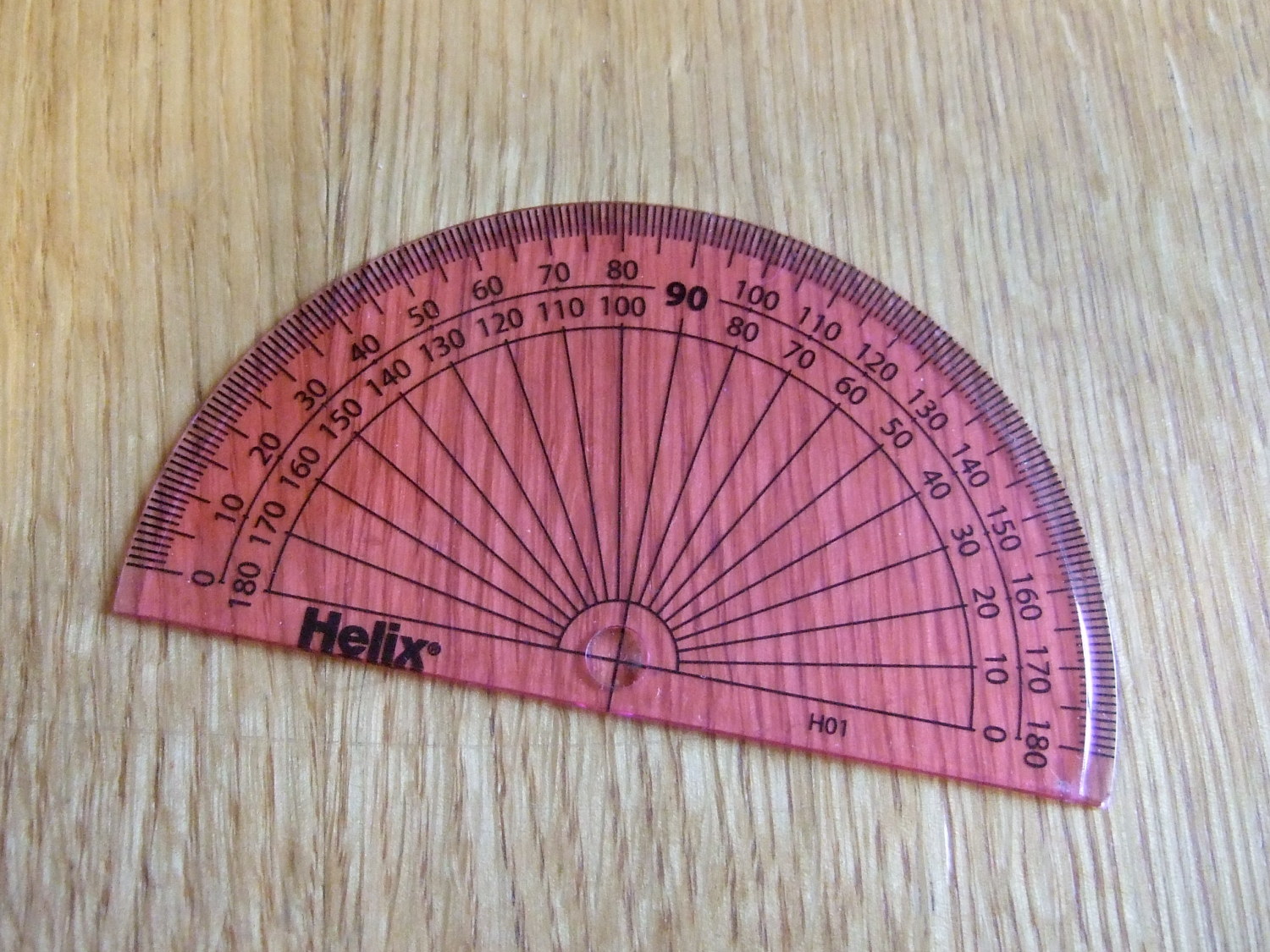Flying Protractors - the power of ground effect
Make stationery glide serenely across a tabletop and find out how it relates to some of the largest aircraft ever built.
Ingredients
 | A protractor (with no holes or lumps) |  | A very smooth table |
|---|
Instructions
Take a normal school protractor. (You need one of the cheap ones, without the holes in the middle, or a protruding lens).
Find a nice flat, ideally plastic-topped table. Modern school tables and lab benches are ideal (most wooden tables are too rough).
Hold the protractor upside down, with the flat side forwards, between your finger and thumb. Slide it a few mm above the desk, with the back slightly lower than the front, and gently let go.
Try it in other orientations. Does it have the same effect?
Result
There is a bit of a knack to it, but you should be able to make the protractor glide gently across the table. In my youth we used to get the protractors to glide slowly across 7-8m of a very smooth lab bench.
Explanation
If you look at the straight edge of your protractor very carefully, it is bevelled (slightly angled). This will help you draw accurately with your pencil, and makes it a lot easier to pry the protractor from its mold during manufacture. However, in this case, the bevel has a wonderful side-effect.
 |  |
|---|---|
| The air is caught by the bevelled front edge of the protractor, and forced underneath. Once it is underneath, it acts as an air cushion, holding it up, and lubricating it. | |
As the protractor moves through the air, the bevel pushes air under the protractor. As the air can't escape downwards, it has to travel all the way to the back of the protractor to escape. This holds the protractor less than a milimetre off the ground, which on a smooth table is high enough for it to fly over all the bumps, and it glides along with very little friction.
If the protractor is the right way up, then the bevel is pushing the air upwards, so no air cushion forms, and the protractor doesn't slide very far. If the protractor is curvy-side-first, it is easier for the air to escape around the side. In this case, you have to push the protractor very fast before it takes off.
 |  |
|---|---|
| If the protractor is the right way up, the air just flows over it, and doesn't form a cushion. | If the protractor is pushed curved side forward, it will work, but not nearly as well, because more air can escape around the sides. |
What has this got to do with giant aircraft?
 Normally a plane flying high in the air is held up because it pushes air downwards, and the equal and opposite reaction pushes the plane up. However, when the plane is very close to the ground, the air is compressed against the ground; increasing its pressure, so the plane gets extra lift, for no extra fuel.
Normally a plane flying high in the air is held up because it pushes air downwards, and the equal and opposite reaction pushes the plane up. However, when the plane is very close to the ground, the air is compressed against the ground; increasing its pressure, so the plane gets extra lift, for no extra fuel.
This is why, when a swan takes off, it spends several seconds flying 30-40cm off the ground before taking off properly. To start off it isn't going fast enough to fly properly, but it can fly in ground effect until it has picked up enough speed to fly properly.
During the Cold War, the Russians built enormous ground effect aircraft to carry troops and missiles. They were called Ekranoplans, and could fly at 2-5m using an eighth of the power of a similar sized aeroplane. The end of the Cold War put a halt to their production, but there are now firms building small ferry and sport ekranoplans, and they are talking about using them as rapid trans-oceanic cargo carriers.
An extreme example of something called ground effect:










Comments
Add a comment